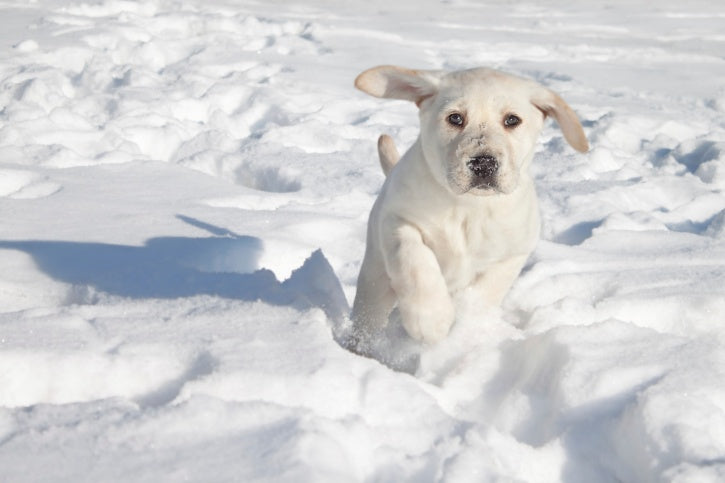There are many misconceptions surrounding pets and their tolerance for temperatures. Many assume that since pets have fur, long or short, they are automatically immune from cold temperatures. Similar to if a human was permanently wrapped in a blanket or jacket. This is an untrue, and dangerous misconception. Not only do pets need many of the same precautions humans do in order to keep their internal body temperatures where they need to be, they often need extra precautions!
Dogs maintain an internal body temperature that is normally about 102.5 degrees Fahrenheit. This is about five degrees warmer than the average body temperature of a human being. Not only do dogs have a far different internal temperature from humans, they regulate it in a way that is far different than humans.
While humans sweat when they become hot, allowing them to quickly regulate their body temperature, dogs are unable to do that. It is a popular misconception that dogs are able to sweat through their paws, but according to Pet MD, they rarely actually do so. The truth is, that regulating temperatures in the heat can be difficult for dogs. Besides panting, dogs do not have many mechanisms to help keep them cool in the heat! One thing dogs can do to attempt to regulate their body temperature is finding a cool spot that will help absorb the heat from their body. The other thing that helps regulate a dogs body heat and keep them cool is actually their fur! Fur helps absorb the heat from the sun, and prevent it from hitting the skin and heating up the dog.
The role of a dogs fur is very commonly misunderstood. This leads to many long haired dog owners to shave their dogs in the summer, despite the crucial role fur plays in helping the dog stay cool during the summer. What fur also does, is lull pet owners into a false sense of security during the winter.
Many owners think that simply because a dog has fur, they are built to withstand any cold temperatures for any period of time. This is perhaps one of the most dangerous misconceptions out there when it comes to dogs in extreme temperatures. While yes, a dogs fur can aid in insulating the dog during periods of extreme cold. It does not provide the level of protection many dog owners think it does. The truth is, prolonged, or even minimal exposure to the cold can be very harmful for dogs, especially older dogs, or dogs that have preexisting health conditions. Dogs also use more energy in the winter to stay warm, so one piece of advice is to slightly enhance their diet to help make up for the energy deficit. Below is an infographic courtesy of Petplan that is based on a study done by Tufts Animal Care and Condition Scales.

As seen in the scale above, many of the temperatures that many pet owners consider to be safe for their dogs are actually quite dangerous. This, as mentioned above, is especially true for dogs with preexisting conditions.
Conditions such as arthritis, heart disease and diabetes can all be exacerbated by exposure to the cold. This is in addition to the normal cold related issues that humans face as well, including frost bite and hypothermia. While many dogs may continue to love playing outside during the winter, it is essential that the proper measures are taken to protect them and help them recover from exposure to the winter temperatures.
Finding a heating solution for your furry friend can be difficult though. Many heating options such as space heaters or electronic heating pads are expensive can be dangerous for pets, and should only be used only under supervision. Otherwise a well meaning owner could end up accidentally causing harm to their pet. It's important that a pet can find a warm or cool space and use it whenever they need it and not just when the owner is present.
No matter the temperature, hot or cold. It is essential that pet owners provide a place for their pets to find relief and recover from the elements. Lucky for them, The Green Pet Shop has top of the line cooling and warming products readily available. So head over to www.thegreenpetshop.com to see the full line of eco-friendly pet products.
Feature Photo Credit: The Doggington Post

